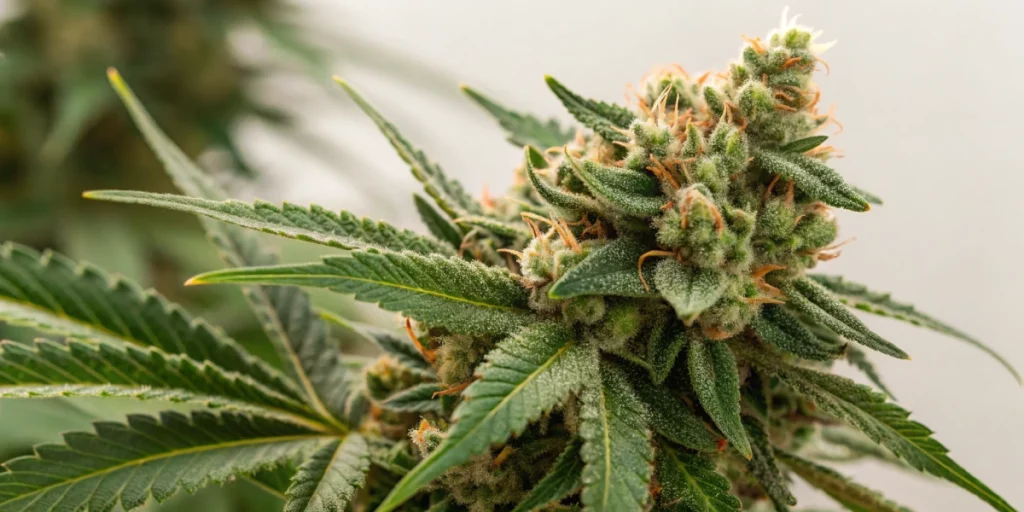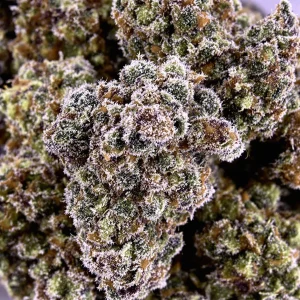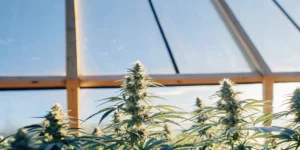Guava Auto strain: Exceptional Genetics and Effects
Origins and Genetics
Guava Auto strain originates from a carefully selected blend of premium genetics that fuse robust indica characteristics with lively sativa energy. The plant is engineered to flower automatically without relying on light cycle changes, making it ideal for small spaces. Its stable genetic foundation ensures predictable growth and consistent yields each cycle, making it a favorite for growers who want reliable results.
This strain’s lineage has been refined over several generations to produce buds that are dense and resinous. Its unique genetic background not only provides a striking appearance but also delivers a distinctive tropical aroma. The balance in its heritage meets the needs of both recreational and medicinal users.
Effects and Potency
Guava Auto strain provides a balanced high that uplifts the mind while gently relaxing the body. Many users enjoy its clear-headed yet calming effect, which supports creativity and focus without heavy sedation. Its moderate to high THC levels are maintained by careful breeding practices, ensuring a steady, enjoyable buzz with every harvest.
The flavor profile of Guava Auto strain is marked by tropical and fruity notes that blend well with herbal undertones. This well-rounded effect makes it suitable for daytime use as well as early evenings. The sensory experience is smooth and refreshing, capturing the essence of its genetic heritage and appealing to a wide range of cannabis users.
Environmental Requirements for Growing Guava Auto strain
Setting Up the Growing Cannabis Space
A proper grow space is key to achieving a successful crop of Guava Auto strain. Set up a well-organized area with proper ventilation, controlled lighting, and stable temperature and humidity to support the plant’s growth. Whether you use a dedicated room or a small grow tent, ensure the space is clean and equipped with tools like fans, carbon filters, and timers to minimize stress on the plants.
A thoughtfully arranged grow area maximizes light distribution and airflow, which simplifies daily maintenance tasks such as watering and monitoring. This careful setup creates an environment where Guava Auto strain can thrive, resulting in robust growth and healthy, aromatic buds that truly impress.
Temperature and Humidity
During the vegetative stage, maintain temperatures between 70°F and 80°F to foster strong growth; during flowering, slightly lower temperatures help boost resin production. Humidity should be kept around 50–60% early on and reduced to 40–50% during flowering to prevent mold and mildew. These stable conditions support efficient nutrient uptake and consistent development.
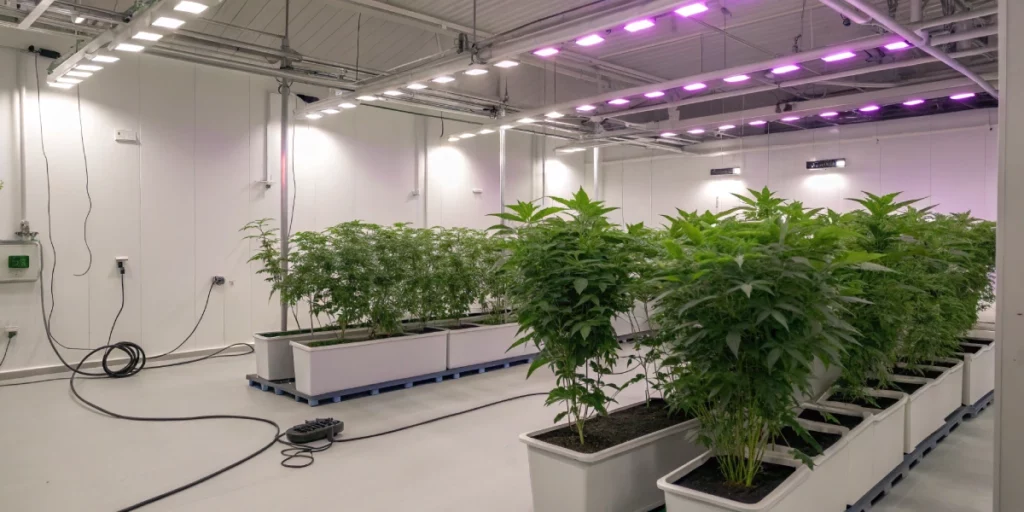
Indoor Cannabis Cultivation
Advantages of Growing Indoors
Indoor growing offers complete control over the environment, which is particularly beneficial for cultivating Guava Auto strain. This method protects the plant from unpredictable weather and pests while allowing you to fine-tune light, temperature, and humidity to optimize bud production. Every factor, from nutrient delivery to airflow, can be managed with precision, ensuring uniform, high-quality buds even in small spaces.
The controlled conditions of indoor cultivation also enable year-round production. Whether you have a compact room or a dedicated grow area, indoor setups let you adjust every element to support vigorous growth and abundant resin production, resulting in a final product that meets high standards of quality.
Lighting Needs
For indoor cultivation, proper lighting is essential to maximize the growth of Guava Auto strain. Full-spectrum LED or HPS lights provide the energy necessary for robust vegetative growth and dense bud development during flowering. Position the lights at an optimal distance to avoid heat stress while ensuring even light distribution across the canopy. This careful setup enhances photosynthesis and enables the plant to reach its full potential.
Outdoor Cannabis Cultivation
Best Conditions for Outdoor Growth
Outdoor cultivation of Guava Auto strain thrives in sunny, warm conditions with ample natural airflow. Choose a location that receives at least six hours of direct sunlight each day; natural light enhances terpene production, intensifying the strain’s tropical flavors. Ensure the soil is well-draining and rich in organic matter to support vigorous growth and high yields.
A favorable outdoor environment also requires some protection from extreme weather. Select a sheltered site that offers sufficient sunlight while guarding against heavy winds and intense rain. With proper site selection and management, outdoor cultivation can yield impressive results that rival indoor setups.
Advantages of Growing Guava Auto strain
Growing Guava Auto strain offers many benefits. Its rapid growth cycle and auto-flowering trait simplify cultivation, making it ideal for growers with limited space. The plant produces consistent, high-quality buds with impressive resin content, and its stable genetics result in predictable yields every cycle. This reliability makes it a top choice for both beginners and experienced cultivators who want a steady, rewarding harvest.
Additionally, the strain’s compact growth habit makes it perfect for urban gardens and small setups. Its efficient use of nutrients and space allows for abundant bud production in confined areas, ensuring that every square inch of your grow space contributes to a substantial harvest.
Problems in Cultivating Guava Auto strain
Overwatering
Overwatering is a common mistake that can damage the delicate root system of Guava Auto strain. Excess moisture can lead to root rot and fungal infections, stunting growth and reducing yields. It is important to allow the soil to dry slightly between waterings and use containers with proper drainage to maintain an optimal moisture balance.
Pest Infestations
Pests such as spider mites, aphids, and thrips can quickly affect the health of Guava Auto strain if not managed promptly. Regular inspections and the use of organic pest control measures are necessary to keep these threats at bay. Early detection and quick treatment help prevent infestations from spreading, ensuring that the plants remain healthy and productive throughout the growth cycle.
Similar Strains
Pineapple Express Auto
Pineapple Express Auto is known for its juicy, tropical flavor and energetic effects. It offers dense, resinous buds and a rapid growth cycle, making it ideal for small spaces. Its distinct aroma and balanced buzz provide a delightful alternative for those who enjoy a tropical, fruity sensory experience.
Tropicanna Banana
Tropicanna Banana delivers a unique blend of sweet tropical fruit flavors and a hint of haze, creating an energizing high perfect for daytime use. Its rapid flowering cycle and compact growth make it ideal for small spaces, while its consistent yield and robust bud production offer a satisfying alternative for those who enjoy the vibrant, fruity profile of Guava Auto strain.
Passion Fruit Auto
Grapefruit Auto bursts with exotic, tangy flavors that mix passion fruit with subtle citrus notes, providing a smooth yet uplifting experience. This strain features an efficient auto-flowering cycle and produces dense, resinous buds that are perfect for urban gardens. Its vibrant effects and consistent performance make it a strong option for growers seeking a tropical twist similar to Guava Auto strain.
Week-by-Week Growth Plan for Guava Auto strain
Week 1 – Germination and Seedling Stage
Begin by soaking seeds to initiate germination, placing them between moist paper towels in a warm, dark environment until taproots emerge, then carefully transfer them into small pots with a well-draining medium while maintaining consistent warmth and humidity to establish a strong root system.
Week 2 – Early Seedling Growth
In week two, the seedlings start showing their first true leaves and increase in size. Provide gentle, indirect light and ensure the soil remains moist but not waterlogged, allowing the young plants to develop steadily in a stable environment that supports early growth.
Week 3 – Continued Seedling Development
During week three, the seedlings grow larger and develop an extensive root system with additional leaves emerging. Increase light gradually and maintain a balanced watering schedule to support steady development, preparing the plant for the upcoming vegetative phase.
Week 4 – Vegetative Growth Begins
At week four, the plant enters the vegetative phase, with leaves expanding and stems thickening as it builds a solid framework. Adjust light intensity and begin a structured watering schedule using a low dose of nitrogen-rich fertilizer to stimulate rapid vegetative growth and prepare for bud production.
Week 5 – Accelerated Vegetative Growth
In week five, vegetative growth accelerates as the plant produces abundant foliage and stronger branches. Continue regular feeding and maintain steady watering while using low-stress training techniques to shape the canopy for even light distribution, creating a resilient structure for flowering.
Week 6 – Preparing for Flowering
During week six, early signs of flowering appear as small bud formations and subtle leaf color changes occur. Adjust the nutrient regimen by reducing nitrogen and increasing phosphorus and potassium, and monitor environmental conditions closely to ease the transition to the flowering stage.
Week 7 – Transition to Flowering
In week seven, the plant shifts into the flowering phase as indoor growers switch to a 12/12 light cycle. Small buds begin to emerge as energy is redirected from vegetative growth to bloom production, with nutrient schedules adjusted to favor bloom-specific supplements for a smooth transition.
Week 8 – Early Flowering
By week eight, the early stages of flowering become more pronounced as buds form and increase in density. The plant channels energy into thickening bud clusters, and nutrient delivery is fine-tuned to support this development while constant monitoring ensures optimal conditions.
Week 9 – Mid-Flowering
In week nine, buds become more prominent with increasing resin production as trichomes shift from clear to milky. Nutrient management is adjusted to support robust bud development while avoiding burn, and regular inspections help secure the plant’s progress toward peak production.
Week 10 – Bud Development
By week ten, buds are well-formed and continue maturing in density and size, with intensified resin production and a more pronounced aromatic profile. Maintain careful nutrient management and stable conditions to support full bud development, ensuring every bud reaches its optimal potential.
Week 11 – Late Flowering
During week eleven, the plant enters the late flowering phase, with trichomes beginning to show hints of amber and buds becoming denser. Maintain balanced nutrient delivery and stable environmental conditions to support the final burst of bud maturation, preparing the plant for harvest.
Week 12 – Harvesting Time
In week twelve, the plant is ready for harvest as trichomes display a mix of milky and amber hues and the buds are densely resinous. Carefully cut the plant, trim excess foliage, and hang the branches in a dark, well-ventilated space to dry for 7–10 days, preserving flavor and potency.
Week 13-14 – Curing the Buds
During weeks thirteen and fourteen, focus on curing the buds to enhance flavor and potency. Once dried, transfer them into airtight glass jars and open daily during the first week to release excess moisture, gradually reducing the frequency until the buds are smooth, stable, and ready for an exceptional final product.
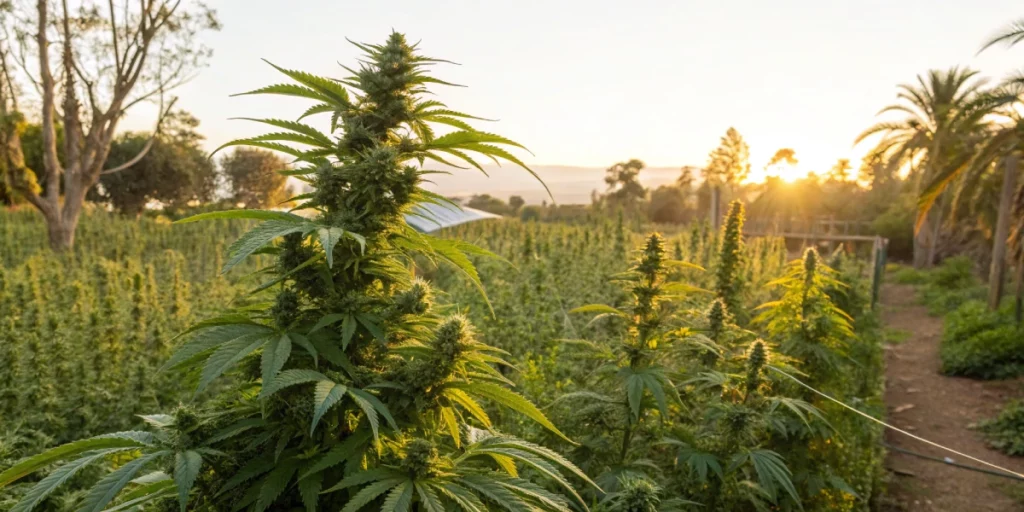
FAQs about Guava Auto strain
What is the typical THC content of Guava Auto strain?
Guava Auto strain typically contains THC levels ranging from 16% to 23%, offering a balanced high that energizes the mind and relaxes the body. The consistent potency is achieved through selective breeding and precise cultivation practices, ensuring each harvest delivers a smooth, satisfying experience. Its balanced cannabinoid profile appeals to both recreational and medicinal users seeking reliable effects without overwhelming sedation.
How long does it take for Guava Auto strain to flower?
Guava Auto strain generally flowers within eight to ten weeks after switching to a 12/12 light cycle, making it an efficient option for growers. Its auto-flowering trait ensures a smooth transition from vegetative growth to bloom, resulting in consistent yields and a fast turnaround. This short flowering period is ideal for cultivators with limited space or time, offering quick, rewarding harvests each cycle.
What flavor profile can I expect from Guava Auto strain?
Guava Auto strain offers a tropical, fruity flavor with subtle hints of guava and citrus, complemented by light herbal undertones. Its aromatic buds deliver a refreshing, crisp taste that evolves on the palate, providing a memorable sensory experience. The balanced flavor perfectly matches its uplifting yet gentle effects, making it a favorite among users seeking a vibrant and enjoyable cannabis session.

